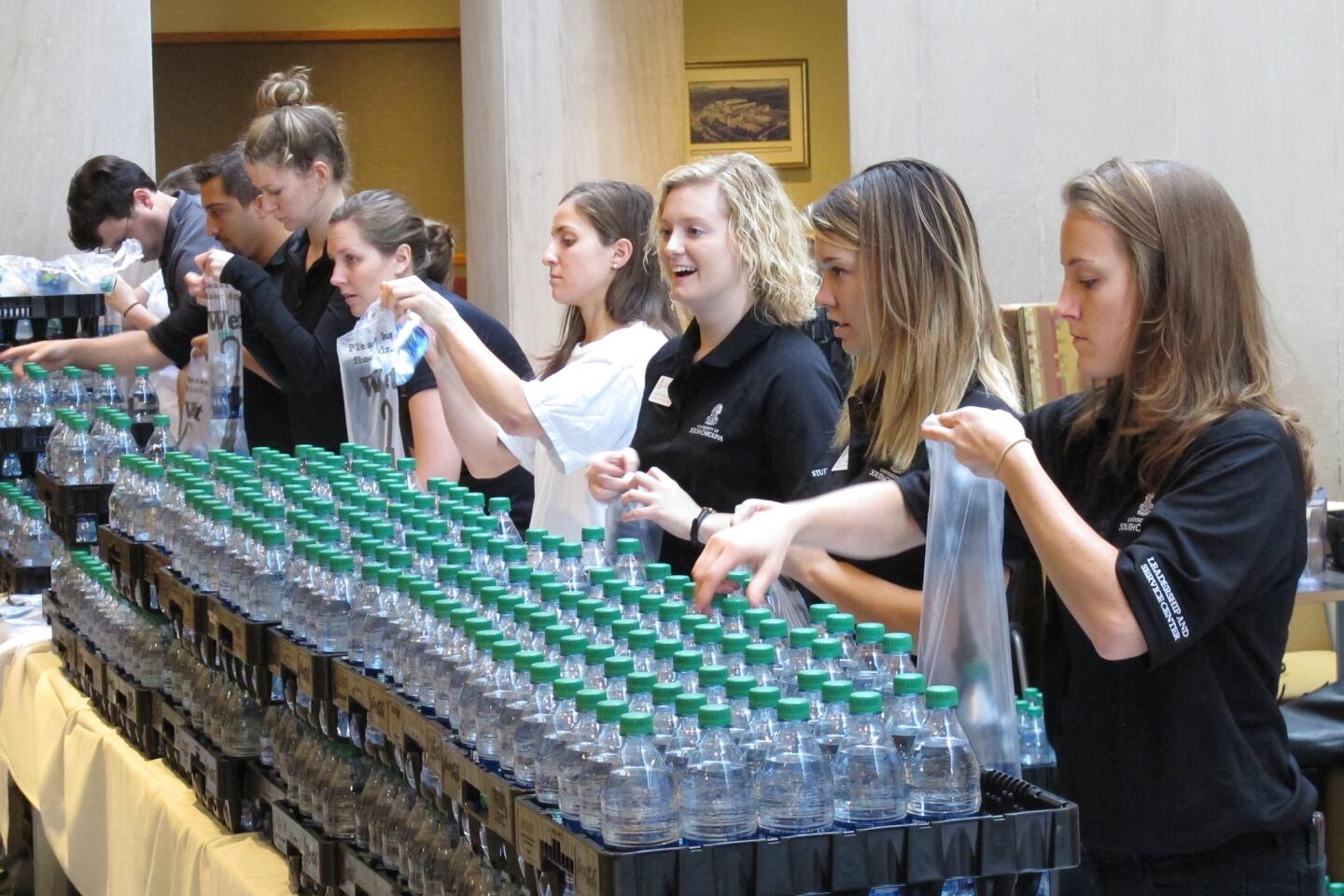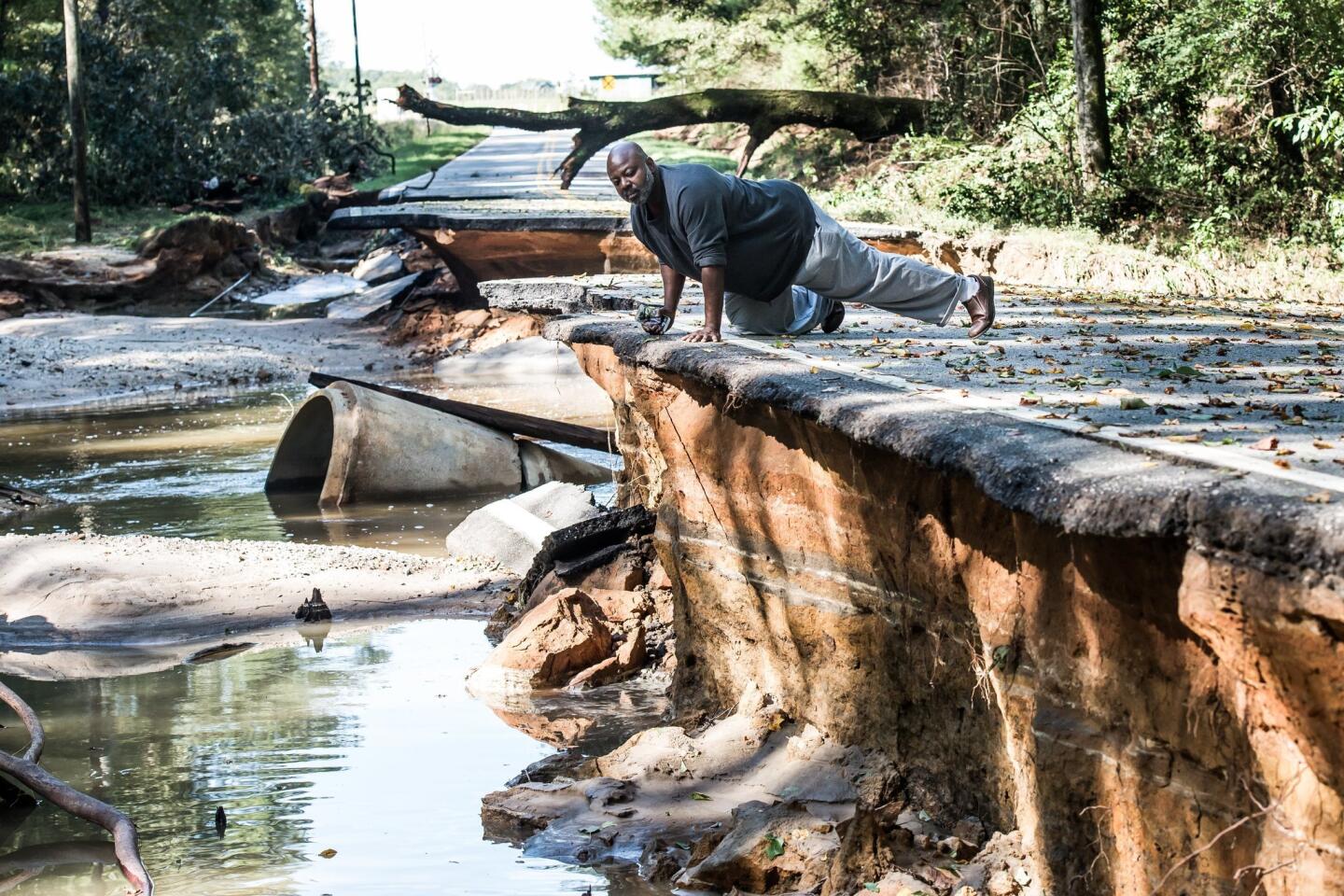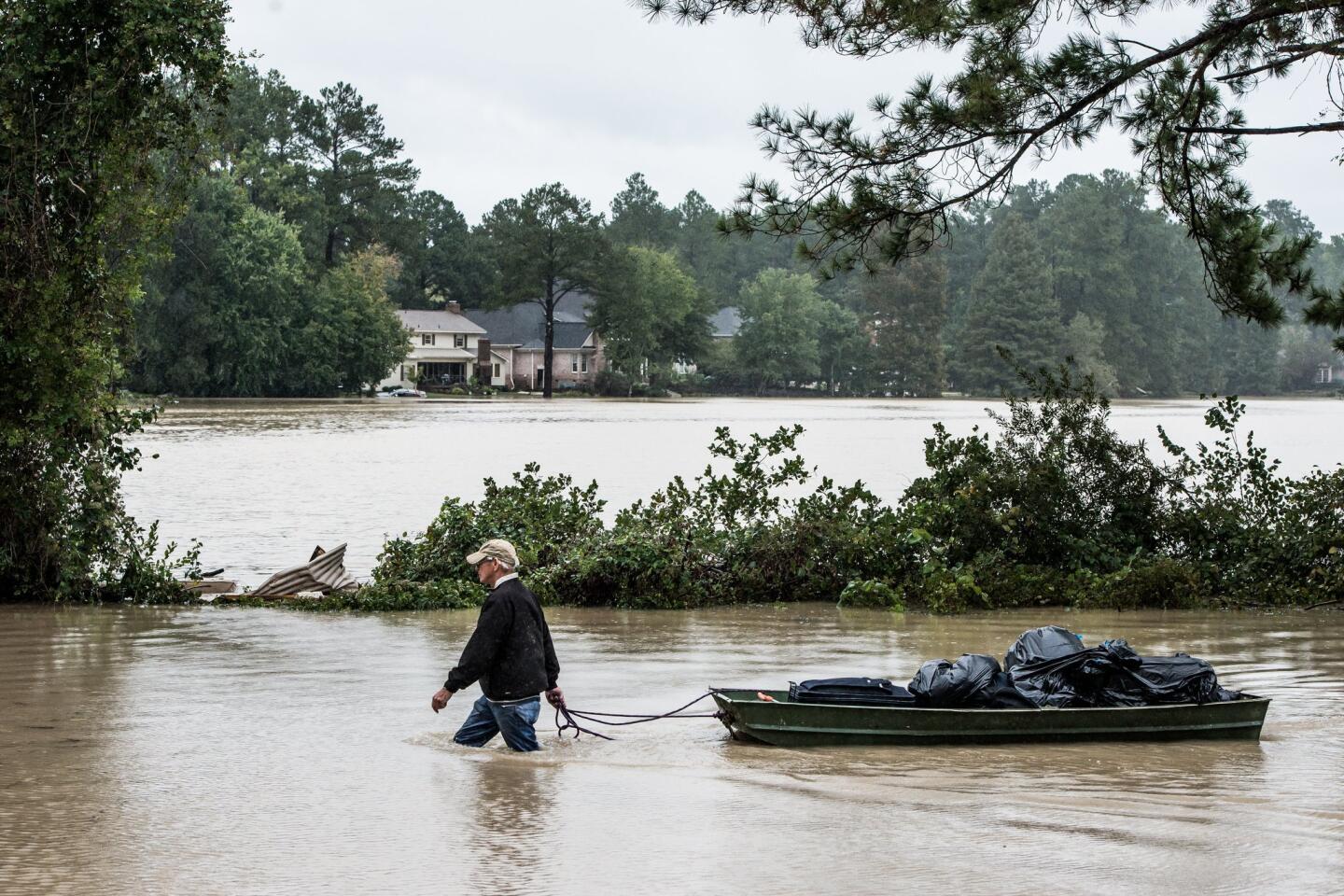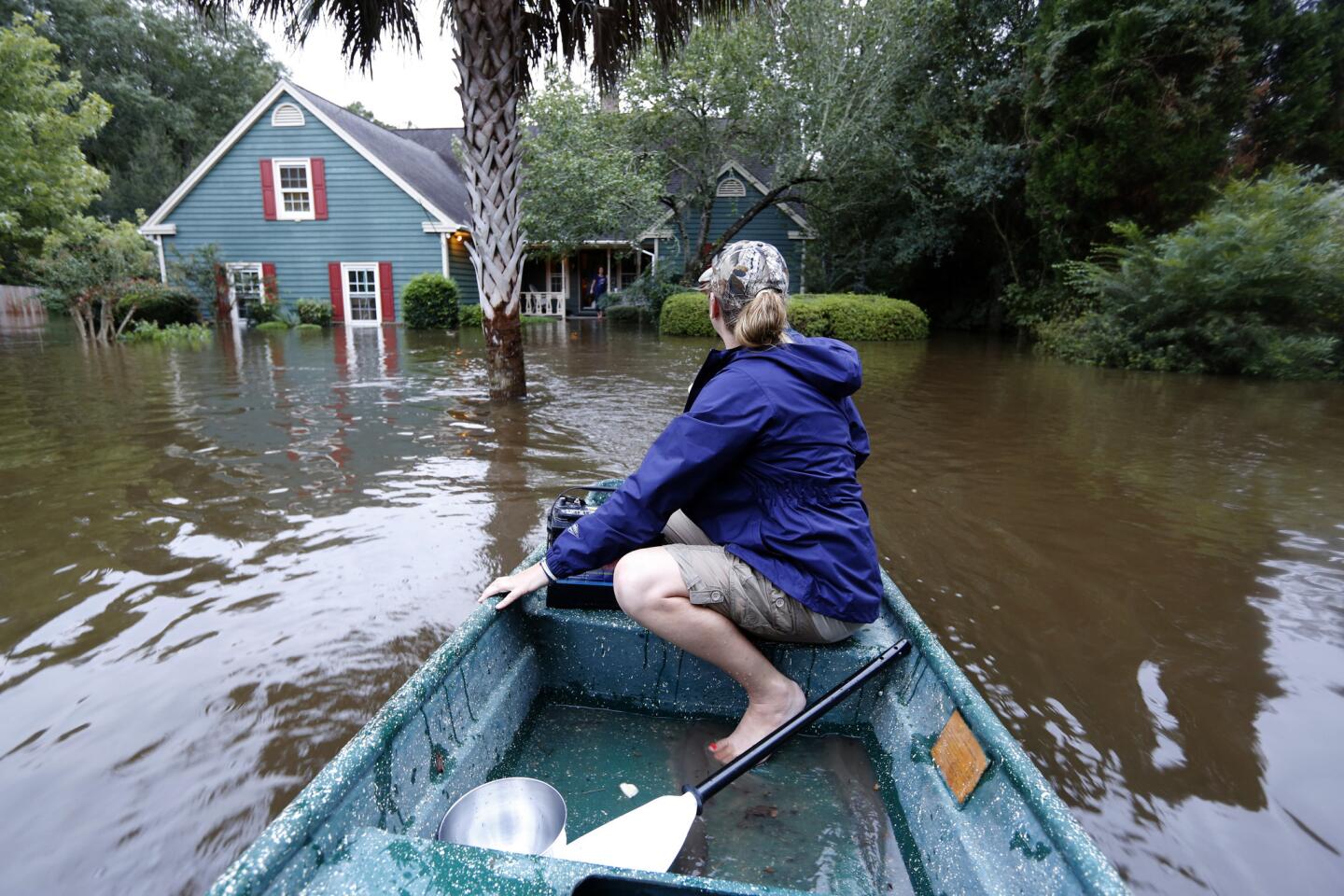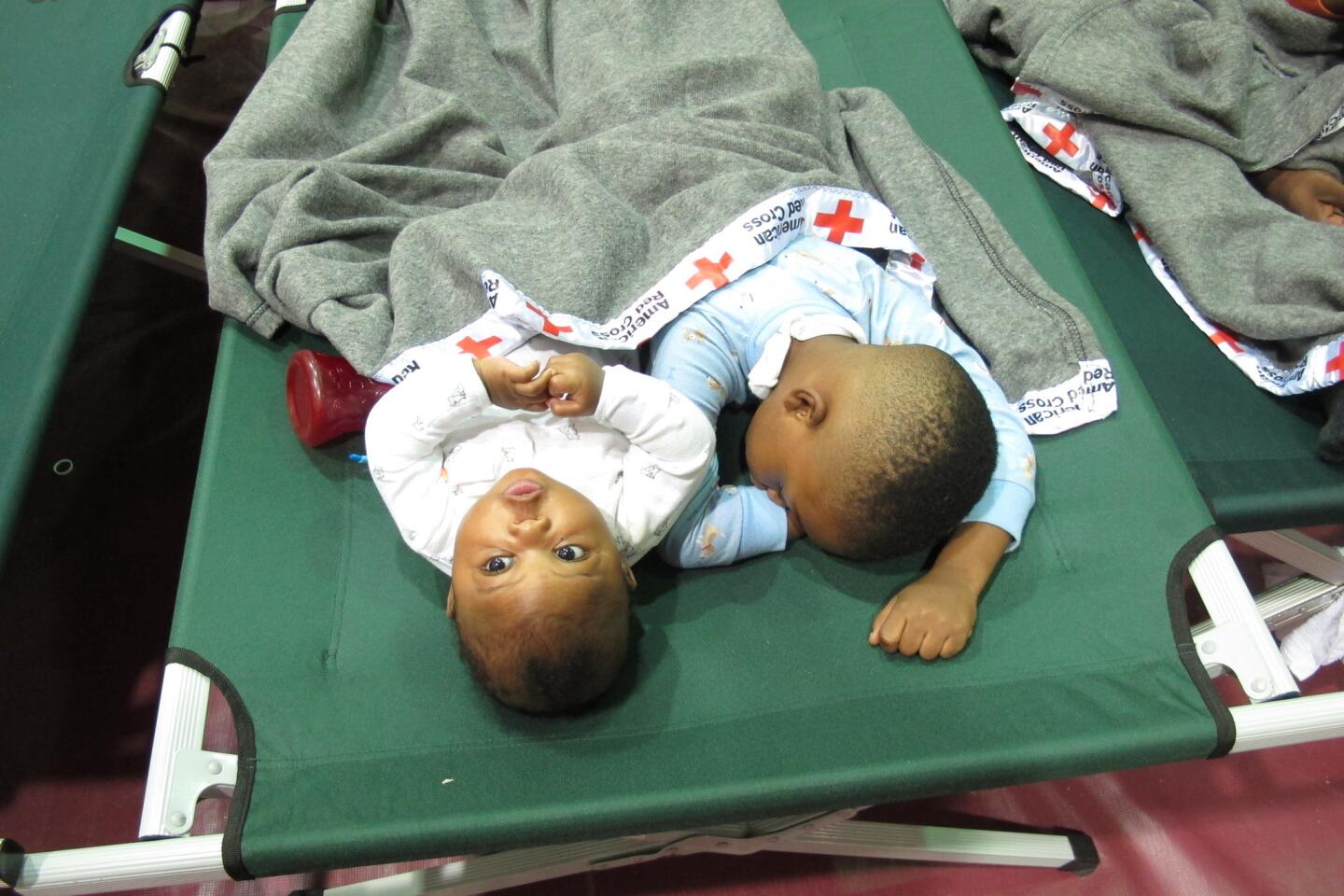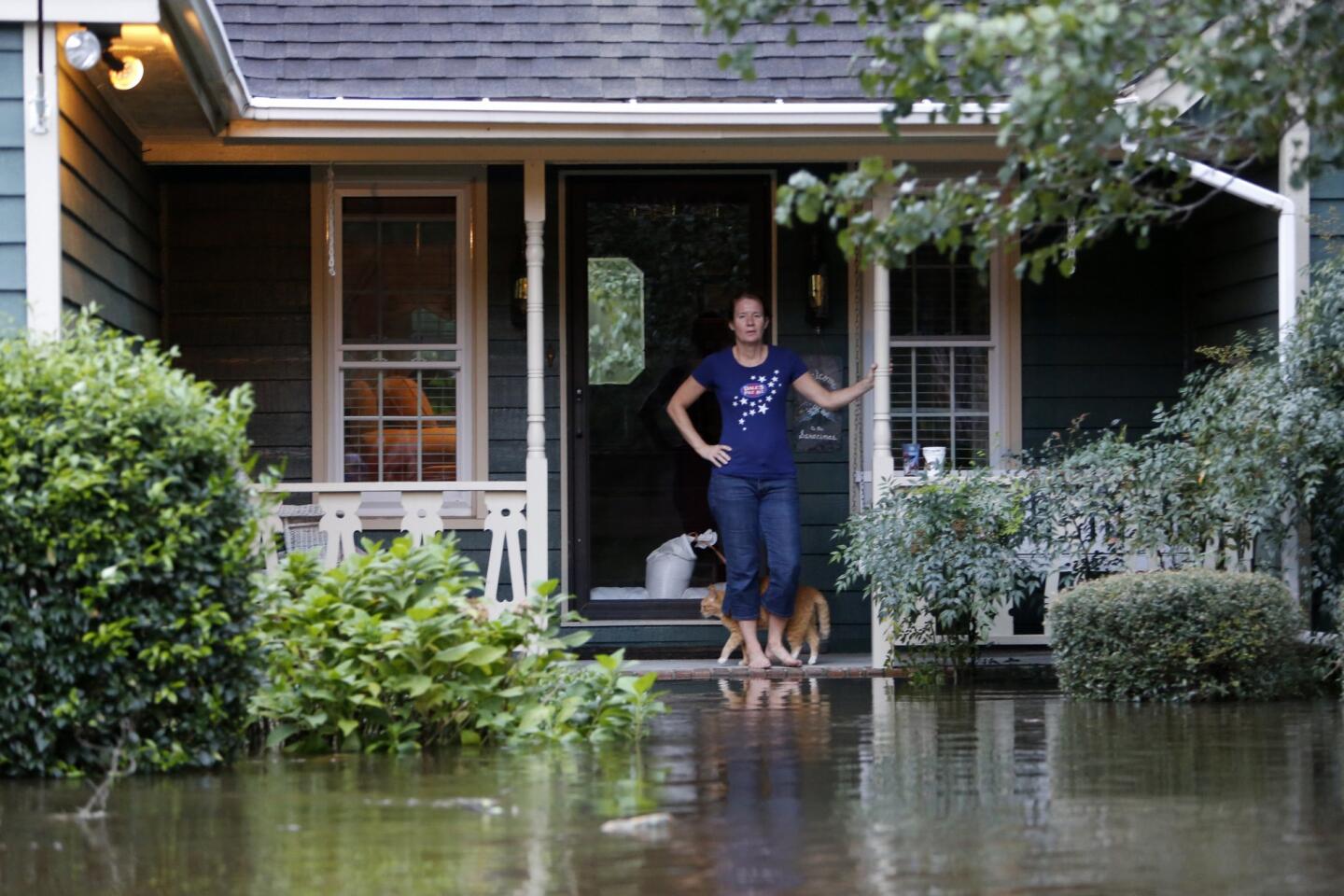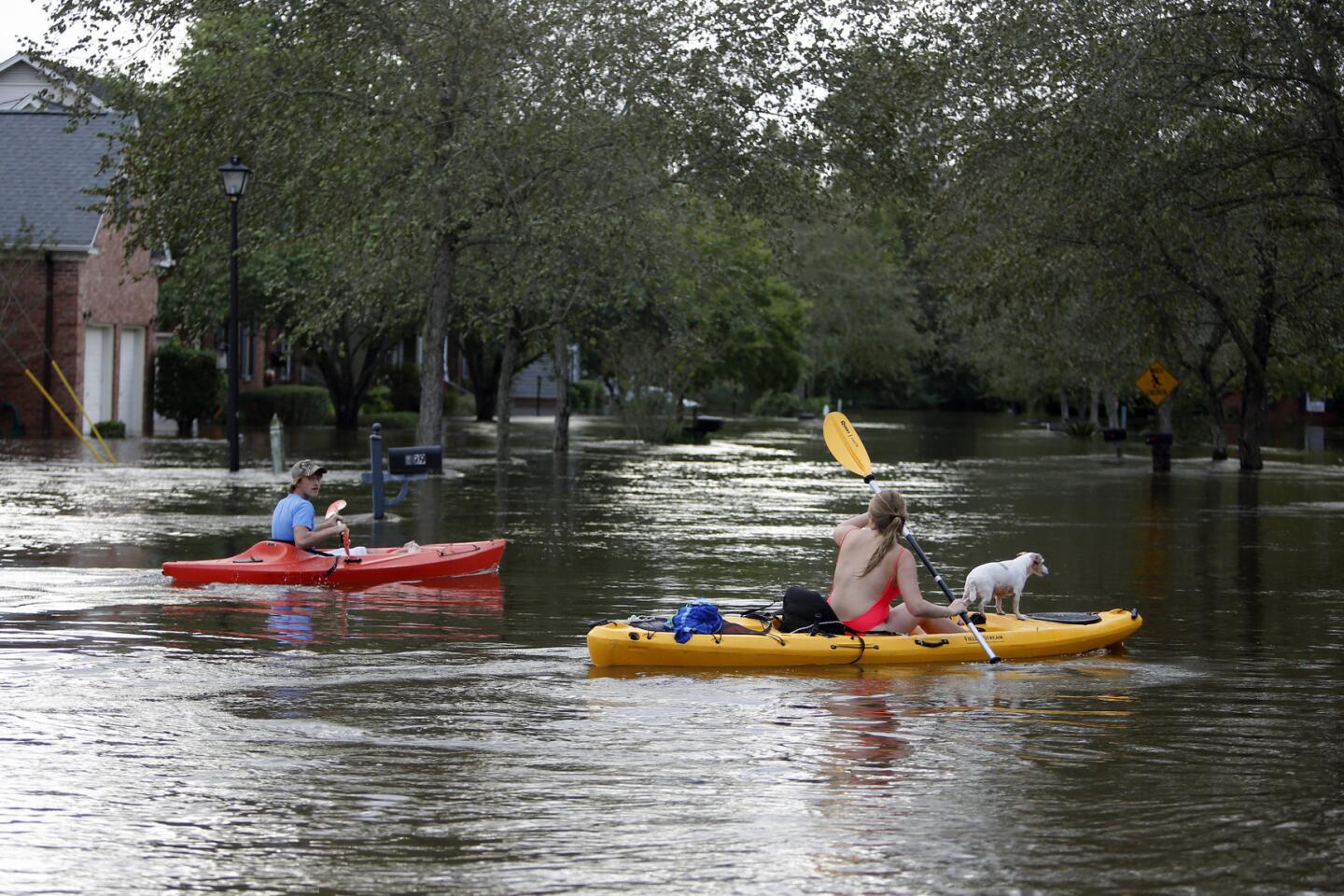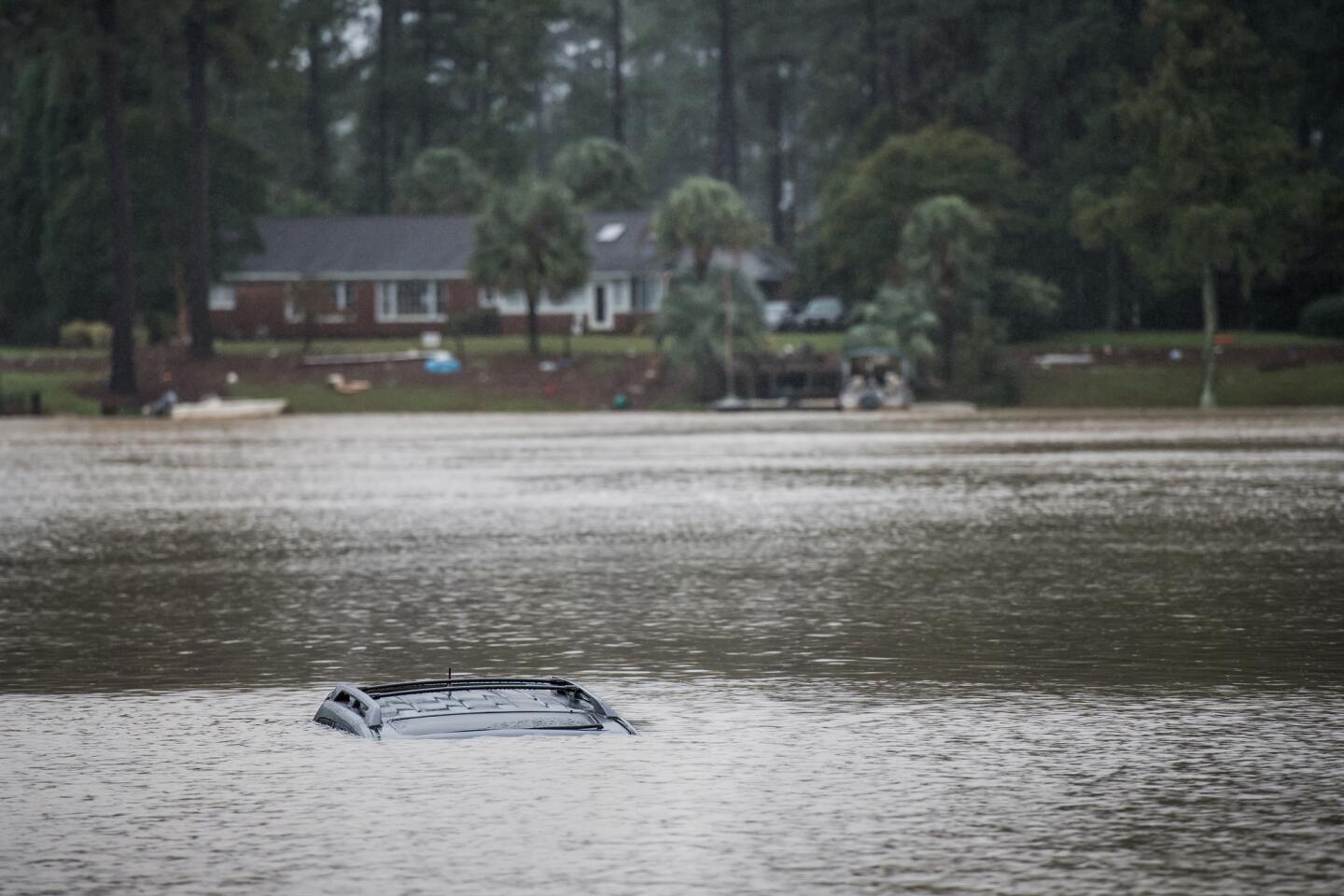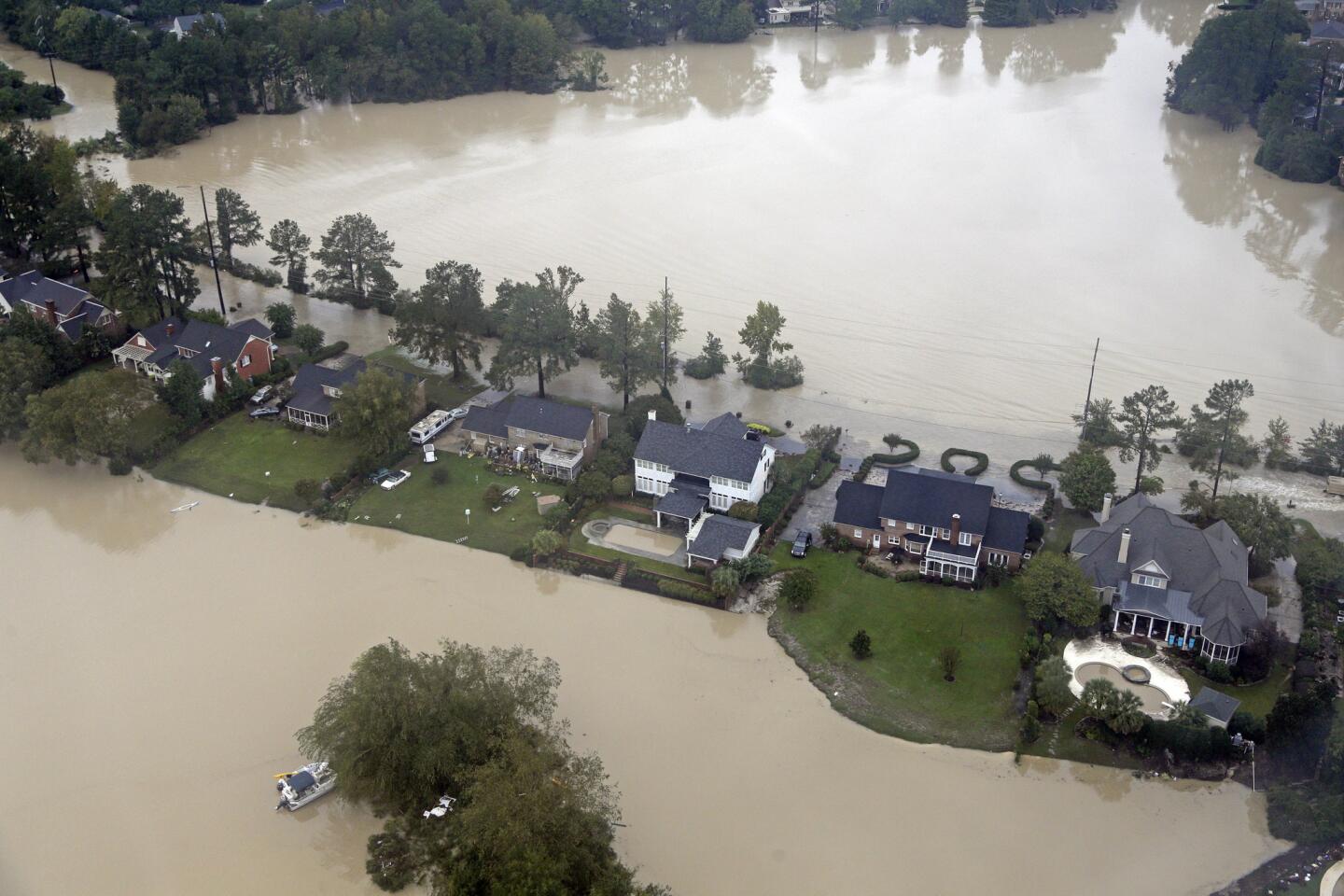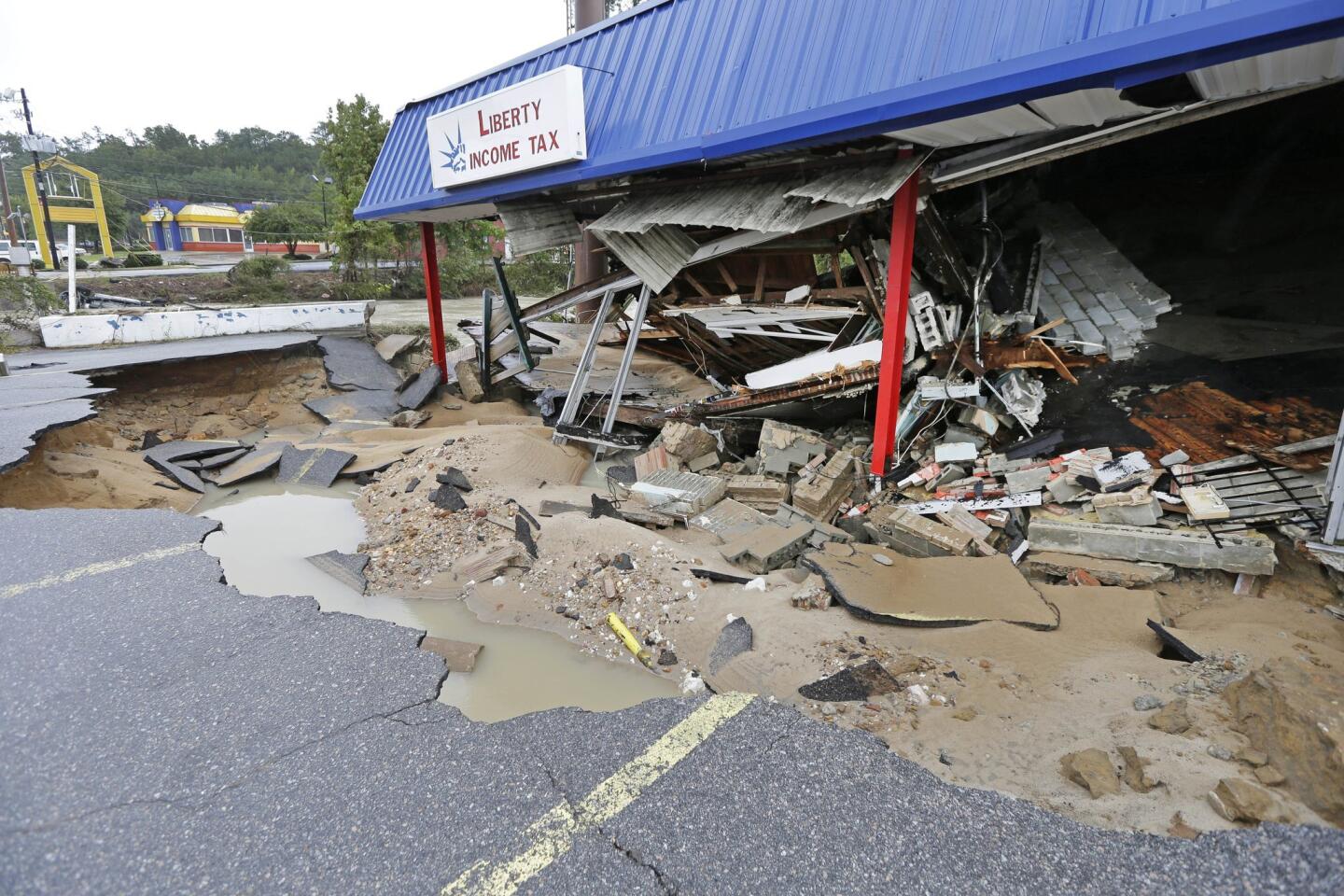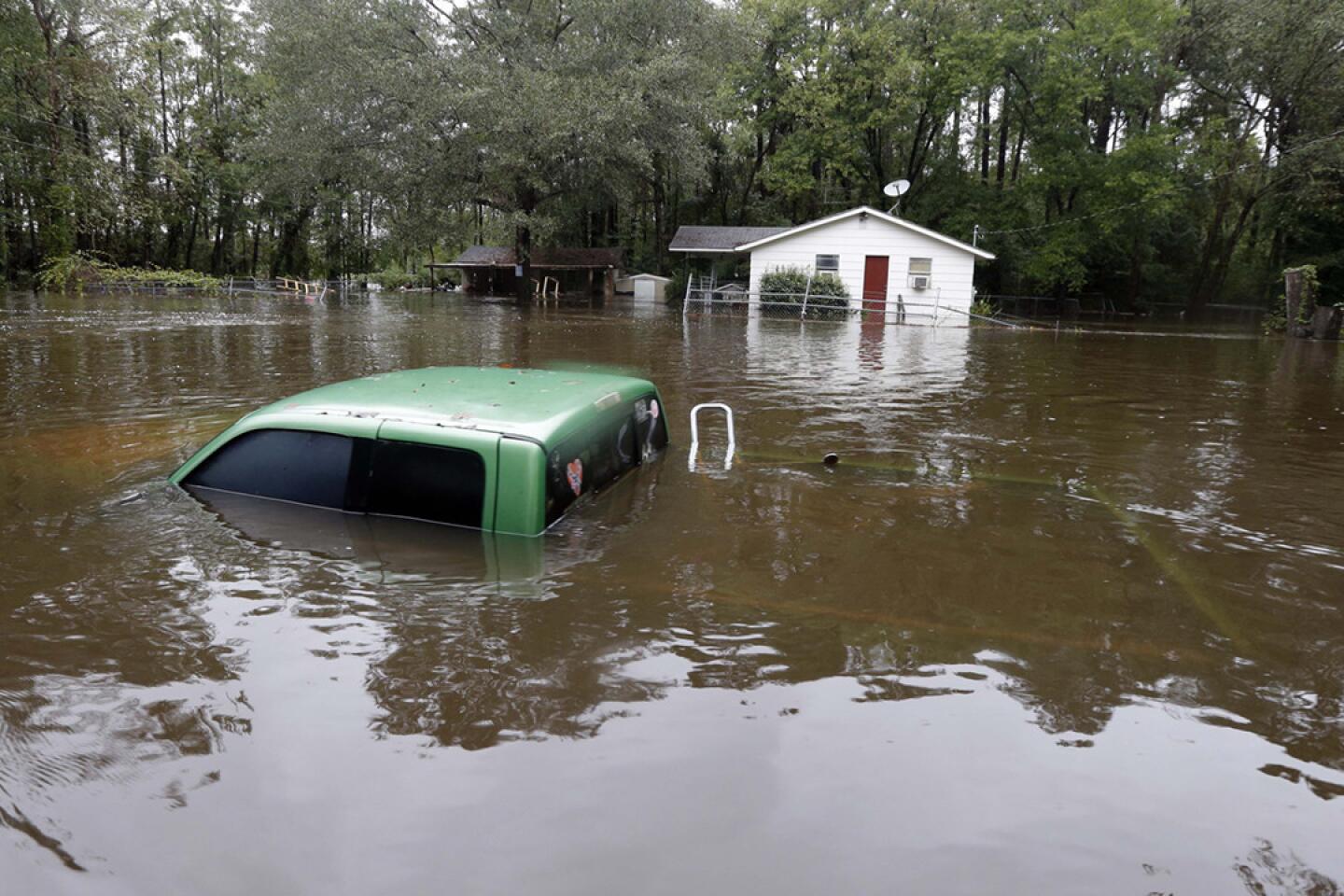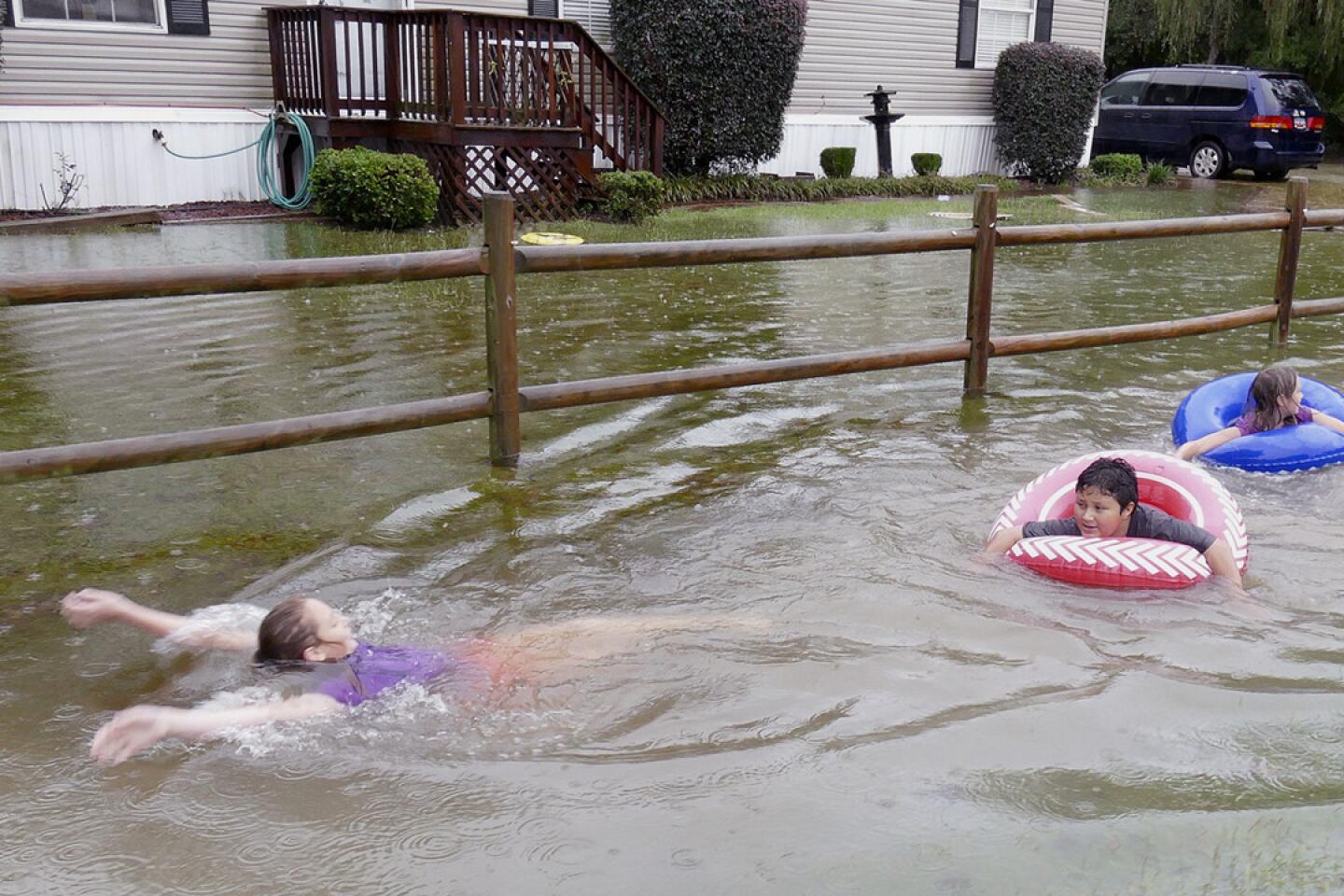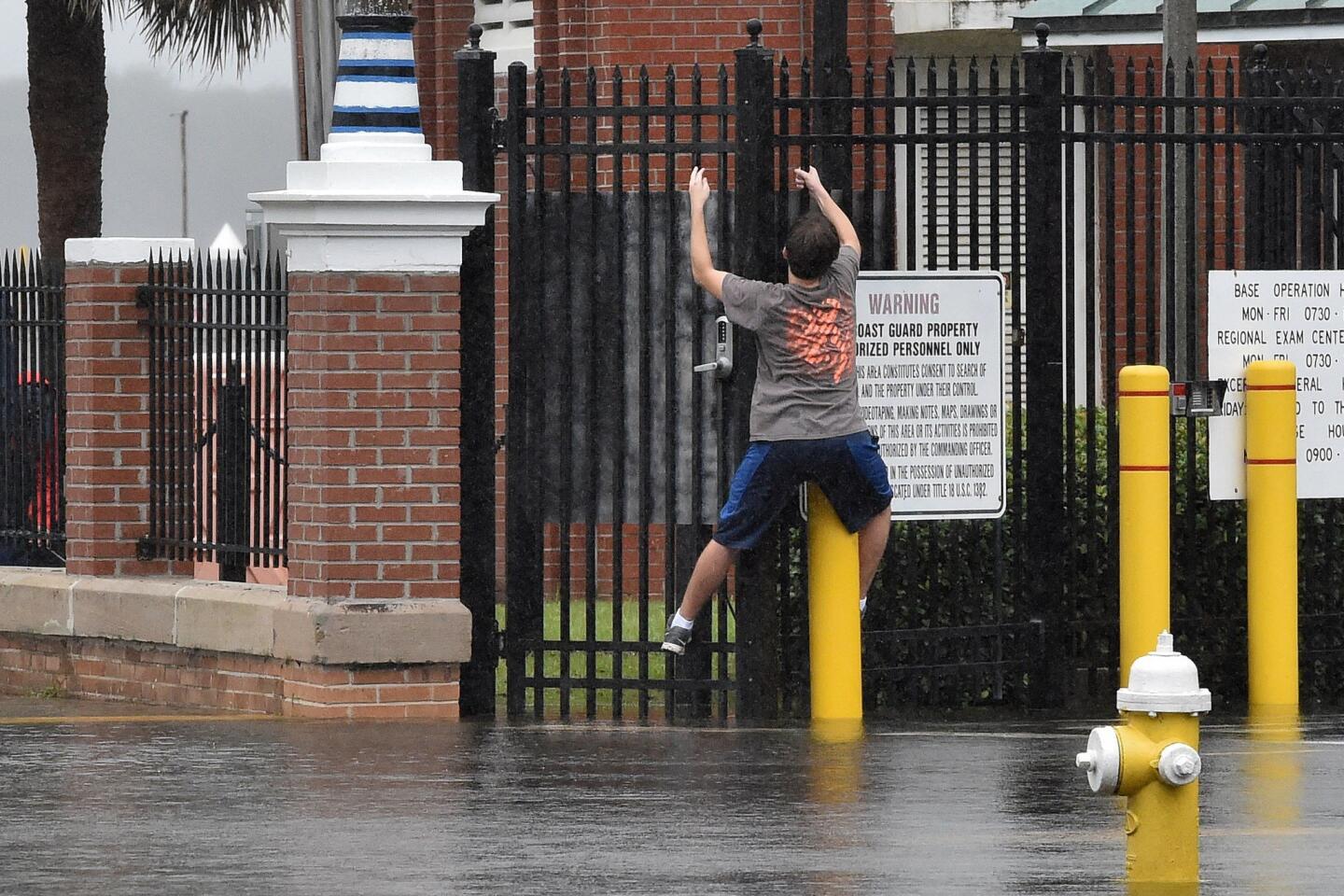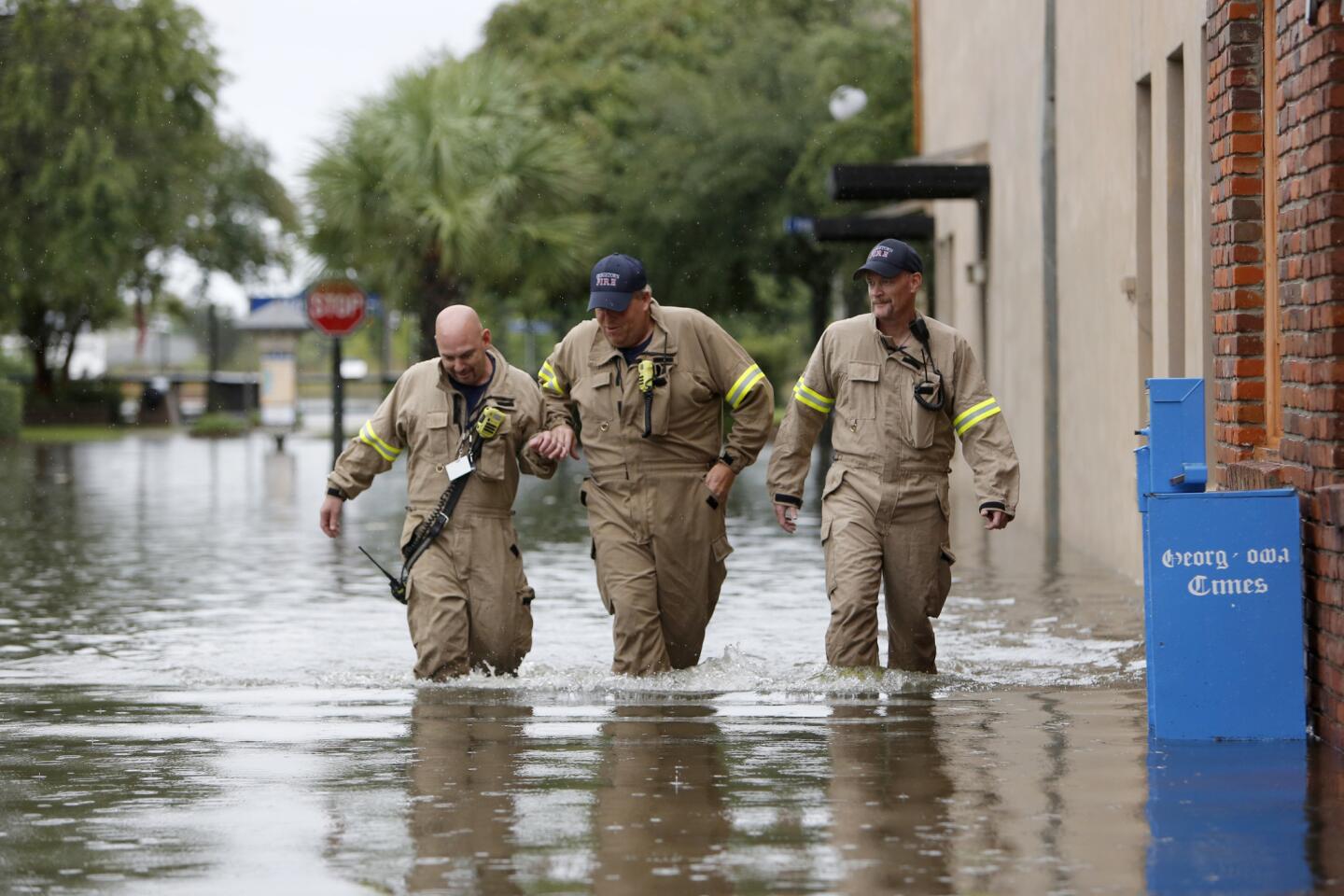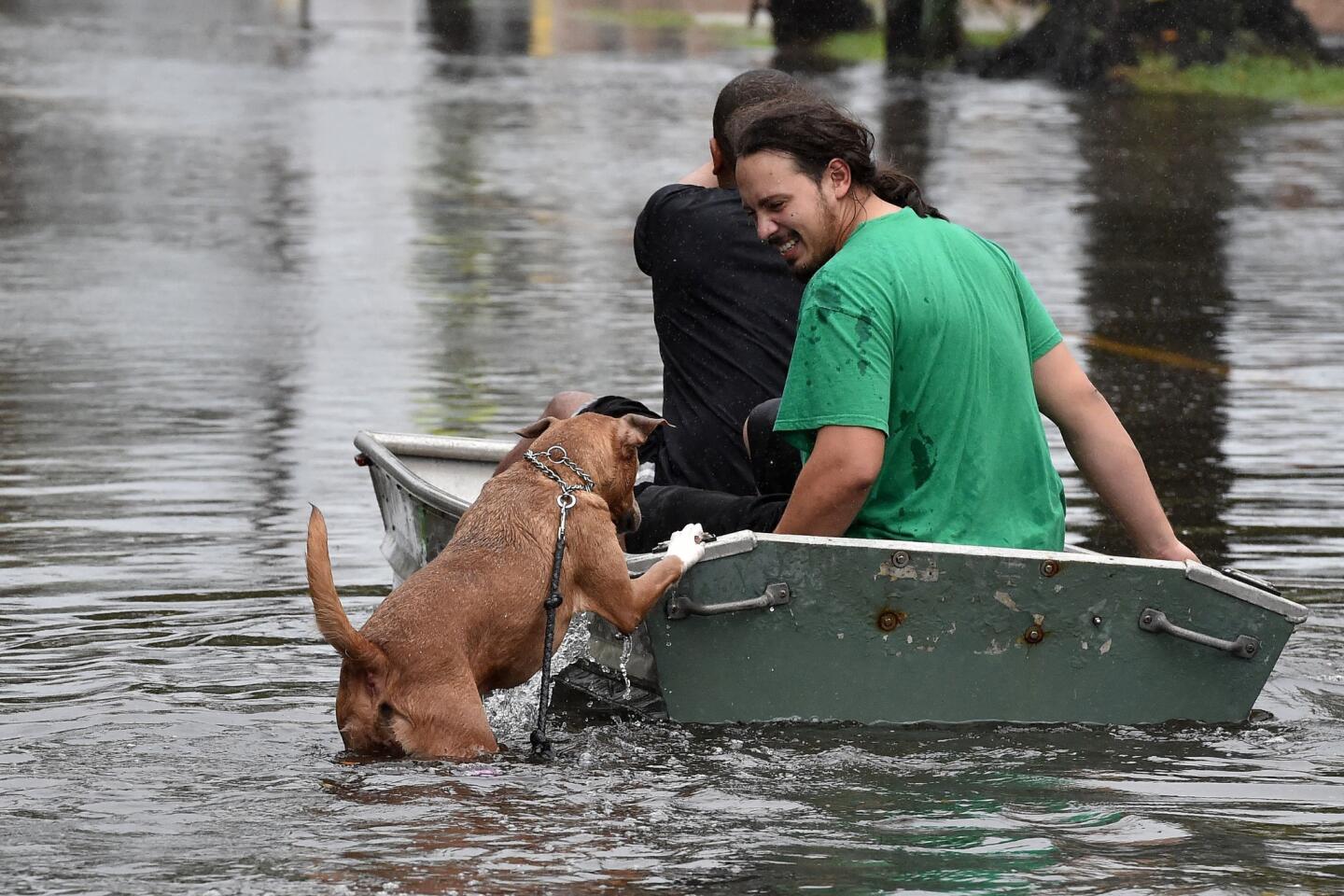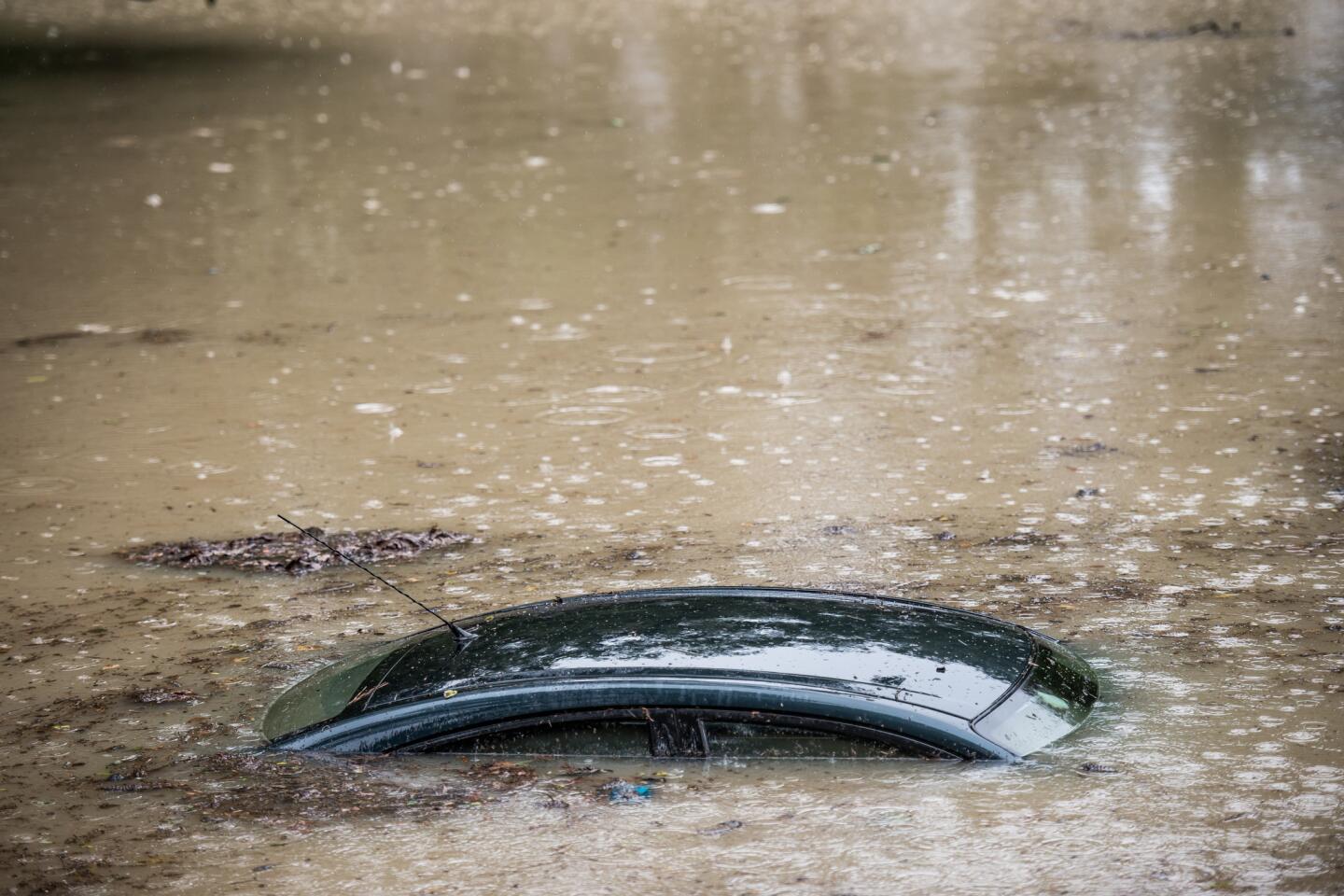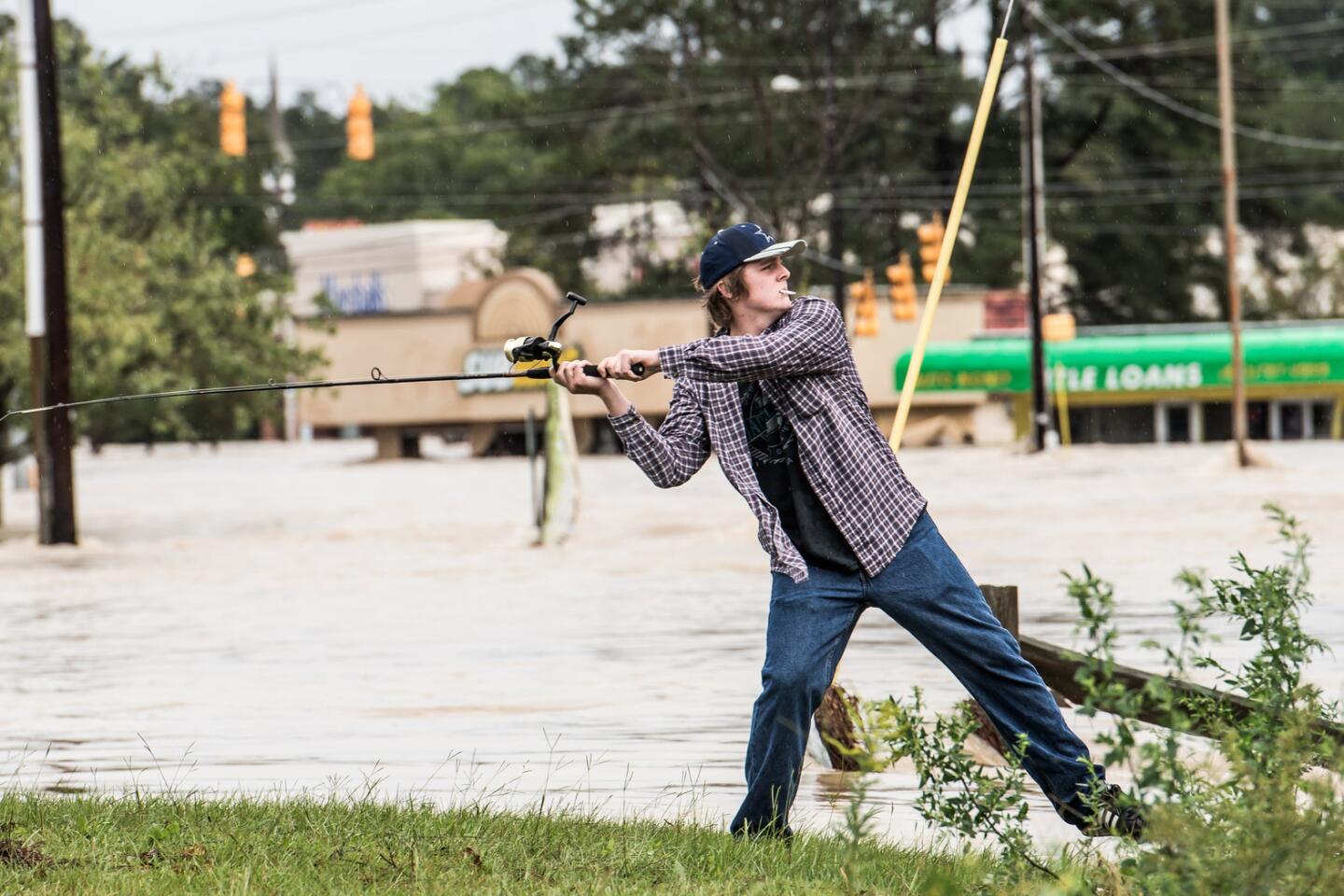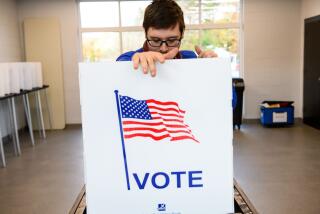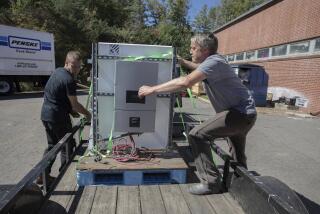Volunteers turn out in force to supply South Carolina with drinking water and food
- Share via
Reporting from Columbia, S.C. — Water has inundated this city for days, swelling small creeks, bursting dams and flooding entire communities. Yet as the sun came out Tuesday and many residents ventured out of their homes, water was the first thing they sought.
“I never thought water would taste this good,” said Billy Avant, 13, as volunteers loaded two cases of plastic bottles into his family’s Toyota Corolla. With only two or three bottles of drinking water back home, the family of four had to ration carefully over the weekend, taking smaller and smaller sips as the rain kept falling.
“I think I appreciate water a whole lot more now,” said Billy’s mom, Jamie Tart, 34.
Sunday was one of the wettest days in the history of South Carolina’s capital, where more than 12 inches of rain fell over five days, according to the National Weather Service. The storm system, partly fed by moisture from Hurricane Joaquin in the Atlantic, dropped as much as 20 inches over the weekend in some areas of the state. At least 17 people were killed, 15 of them in South Carolina and two in North Carolina.
As the clouds cleared, emergency officials worked to contain rainwater to prevent further flooding, as well as to distribute fresh water to residents who had been cooped up indoors for days. Across the state, 11 dams had failed, and more than 30 were being monitored. About 40,000 people had no running water.
The problems were particularly acute in Columbia, where all of the city’s 375,000 water customers were advised to boil water for at least a minute before using it for drinking or cooking. Several water lines broke, officials said, and the Canal Water Treatment Plant was “experiencing historically difficult conditions.”
By late Tuesday, 284 roads and 154 bridges remained closed across the state. That made finding drinking water a challenge. A routine trip across a neighborhood or from one small town to another could mean countless stops, U-turns and detours.
Eric Williams, 43, a technician, needed nearly 30 minutes to make a typical 10-minute drive from his home to Lower Richland High School in Hopkins to stock up on water for his family.
“You can never get enough,” he said as he waited patiently in his white Ford Escape. “We thought we were prepared, but still we ran out of stuff.”
As Columbia Mayor Stephen K. Benjamin advised that the order to boil water was likely to be in effect for “quite some time,” thousands of residents made their way to water distribution points, where the mood was calm and orderly. South Carolina State Guard and National Guard personnel briskly offloaded pallets of water from 50-foot truck trailers.
“We got it under control,” said Kimberly Davis, 23, a sergeant with the U.S. Army, as she stared at a steady stream of pickups, SUVs and sedans that snaked around a Wal-Mart parking lot in east Columbia. Behind her, a row of volunteers from churches and bikers in Harley-Davidson leather clamored to help hand out cases of water.
“There’s almost too many people,” one volunteer said with a laugh as she waved a pickup on, just as another volunteer opened a passenger door to load it up. “We’re tripping over people who want to help.”
At a Wal-Mart, Pamela Crockett, 51, loaded up a shopping cart with a case of water for her family, a plastic trash can to scoop up rainwater to flush her toilet, incense for the bathroom, and several gourmet cans of Cesar Savory Delights filet mignon — a special treat to make up for all the time indoors — for her pair of Maltese dogs.
Then she added an extra case of water.
“I thought I had enough before the storm,” she said. “I bought three cases. It wasn’t nearly enough. We had condensed soup, but no water. Ramen noodles, but no water.”
Crockett wanted to bathe before going to the store, so she microwaved a small bowl of water and sat on the edge of her tub. She didn’t have enough water to wash her hair, so she wore a casual black hat.
Throughout the city, helicopters buzzed overhead and military Humvees weaved along neighborhood streets and highways. Yet many neighborhoods began to take on an air of normalcy as residents ventured out to jog, walk dogs and push strollers.
By late Tuesday afternoon, only 10 families remained at the shelter at the AC Flora High School in Forest Acres, a lush, manicured neighborhood in east Columbia that had been badly afflicted by flooding.
Yet as the number of those seeking shelter dwindled, the ranks of volunteers kept growing. They dropped off boxes and brown paper bags crammed with cans of sweet corn, macaroni and cheese, apples and animal crackers. Eventually, the shelter sent well-wishers with food donations elsewhere.
“We got enough, we got more than enough,” said volunteer Annie Gripper, 50, as she watched a procession of residents clamber up the high school steps to drop off supplies. “It brings tears to my eyes to see the community come together like this.”
Dave Comen, 55, an environmental scientist, had driven 120 miles from Anderson to Columbia. He opened up his truck and started unloading 20 cases of water onto the sidewalk.
“It’s hard to watch from afar,” he said. “I can’t pump the water out of anyone’s home, but I can give them water to drink.”
Jarvie is a special correspondent.
ALSO:
Can American Apparel really stay in L.A.?
Doctors Without Borders says its Afghan hospital ‘was deliberately bombed’
Farmworkers find a bumper crop of squalor in Coachella Valley trailer parks
More to Read
Sign up for Essential California
The most important California stories and recommendations in your inbox every morning.
You may occasionally receive promotional content from the Los Angeles Times.
